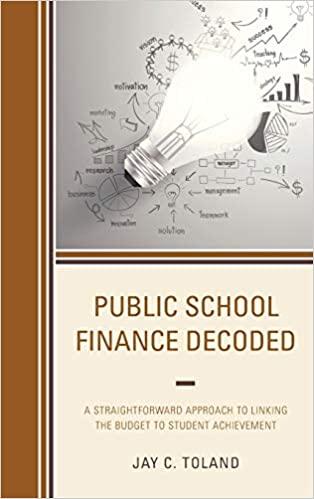Question
In this project we are going to build a model for your personal retirement savings and for your month to month budget. For the retirement
In this project we are going to build a model for your personal retirement savings and for your month to month budget. For the retirement savings we will be modeling out 50 years of retirement savings in both tax deferred contribution accounts (401k, 401a, 403b, 457, Traditional IRA) and post-tax contribution accounts (Roth IRA, Roth 403b). We will model the expected return on investments conditioned on your preference of retirement portfolio weights. We will also model employer matching, expected raises, social security payouts, and flexible retirement and expiration dates. The outputs in our model will be the taxable and tax exempt retirement funds available at retirement, and the payout of endowment like and zero remaining balance withdrawals from retirement accounts.
For the retirement model make the following assumptions: Starting salary: $75,000, annual salary inflation 5%, employer matches 6% of salary for 401k account, maximum savings of after tax plans of $6,000 per year. Assume your maximum salary is $200,000. The expected annual return on equity portfolios is 12% per year, on alternative assets is 8% per year, on long term bond funds is 6% per year, and on cash is 1.5% per year. You may select the starting weights of your investment portfolio. You can assume that your post retirement annual social security payout is $36,000 per year pretax. Your post retirement tax rate is 25%. Your post retirement investment return is 3%. You may choose your years to retirement and your years to expiration. After you have completed your model, you will make a two two-way sensitivity table. The first should report your zero remaining balance after tax income after changing your years to retirement and your years to expiration. The second should report your zero remaining balance after tax income by changing expected investment returns both prior to and after retirement.
In the second model we will budget your monthly take home pay, recurring expense, debt service, singular expenses, net income, and ending cash balance monthly for the next five years. We will again assume that your first job pays $75,000 per year ($4,290 take home per month). We will build a mortgage, auto, and student loan calculator to help you come up with realistic assumptions for your monthly expenses.
Step by Step Solution
There are 3 Steps involved in it
Step: 1

Get Instant Access to Expert-Tailored Solutions
See step-by-step solutions with expert insights and AI powered tools for academic success
Step: 2

Step: 3

Ace Your Homework with AI
Get the answers you need in no time with our AI-driven, step-by-step assistance
Get Started


